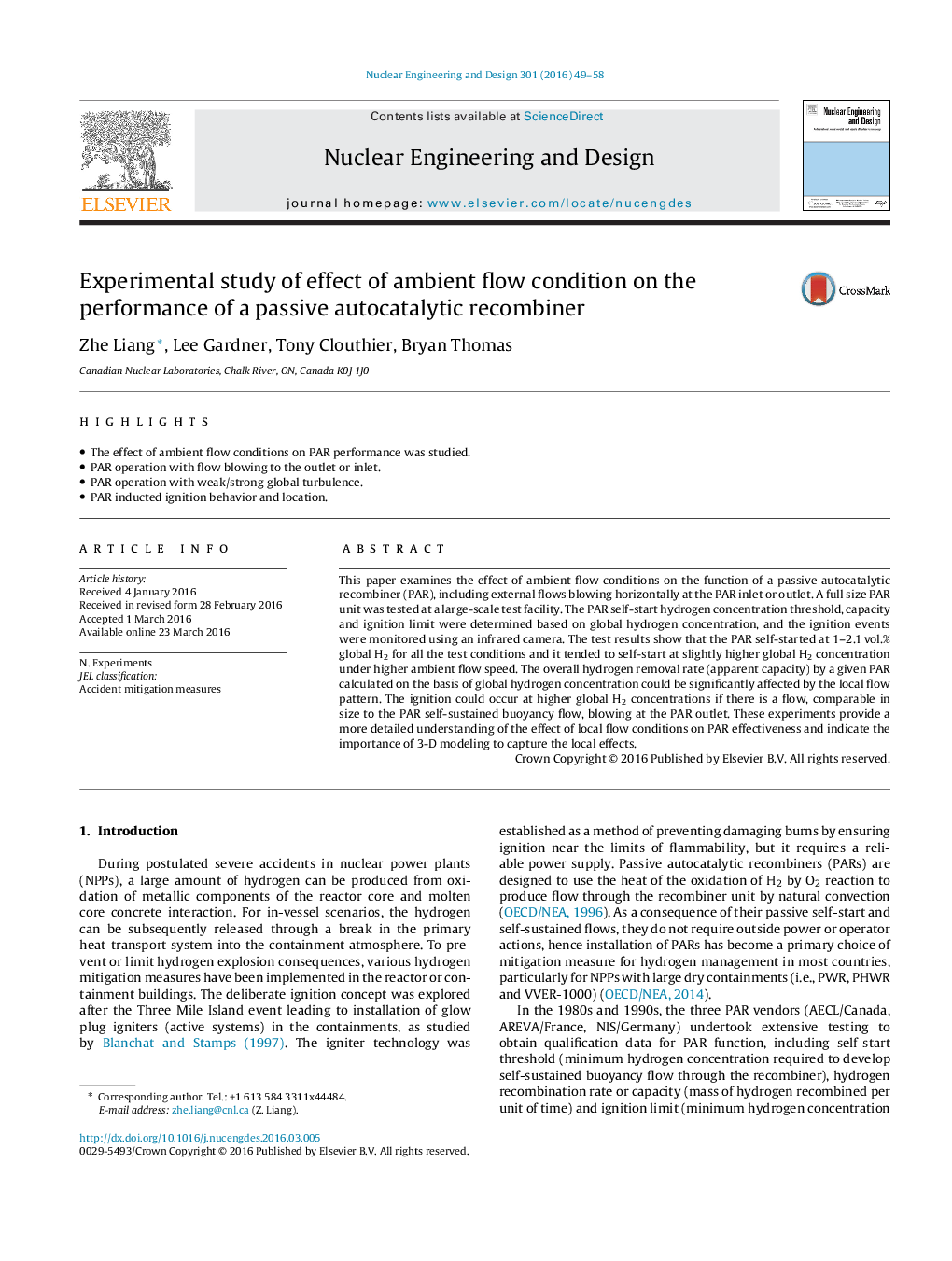| Article ID | Journal | Published Year | Pages | File Type |
|---|---|---|---|---|
| 295969 | Nuclear Engineering and Design | 2016 | 10 Pages |
•The effect of ambient flow conditions on PAR performance was studied.•PAR operation with flow blowing to the outlet or inlet.•PAR operation with weak/strong global turbulence.•PAR inducted ignition behavior and location.
This paper examines the effect of ambient flow conditions on the function of a passive autocatalytic recombiner (PAR), including external flows blowing horizontally at the PAR inlet or outlet. A full size PAR unit was tested at a large-scale test facility. The PAR self-start hydrogen concentration threshold, capacity and ignition limit were determined based on global hydrogen concentration, and the ignition events were monitored using an infrared camera. The test results show that the PAR self-started at 1–2.1 vol.% global H2 for all the test conditions and it tended to self-start at slightly higher global H2 concentration under higher ambient flow speed. The overall hydrogen removal rate (apparent capacity) by a given PAR calculated on the basis of global hydrogen concentration could be significantly affected by the local flow pattern. The ignition could occur at higher global H2 concentrations if there is a flow, comparable in size to the PAR self-sustained buoyancy flow, blowing at the PAR outlet. These experiments provide a more detailed understanding of the effect of local flow conditions on PAR effectiveness and indicate the importance of 3-D modeling to capture the local effects.
